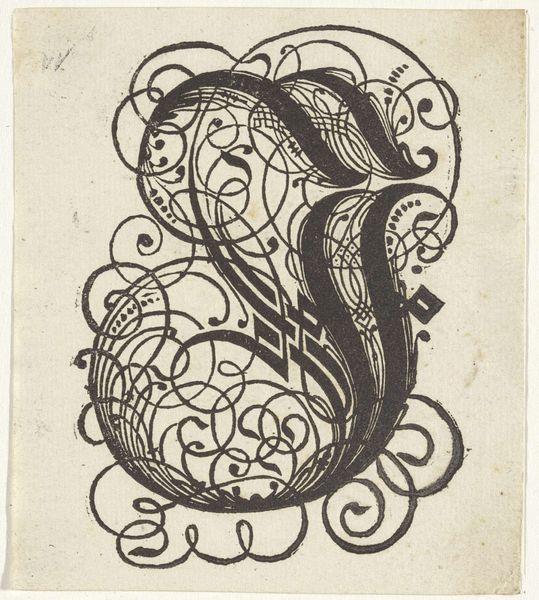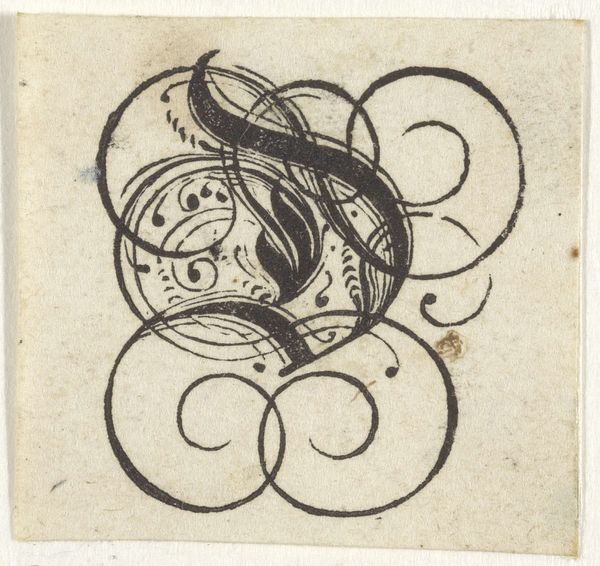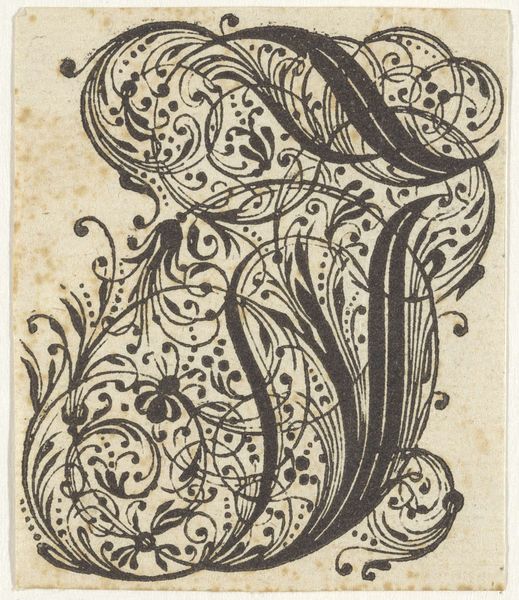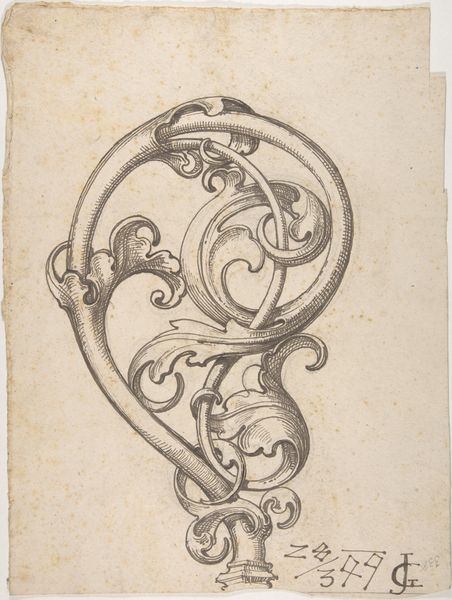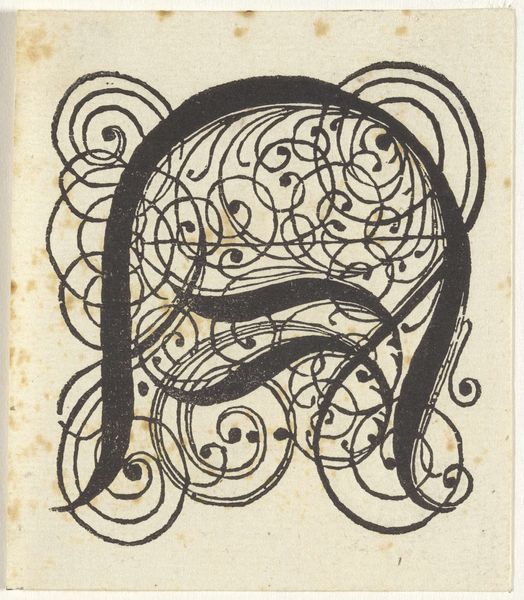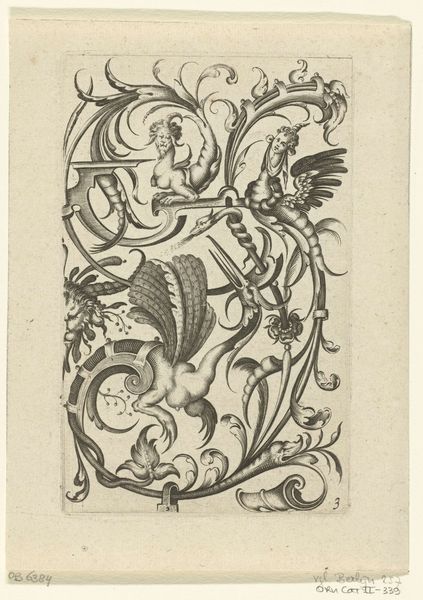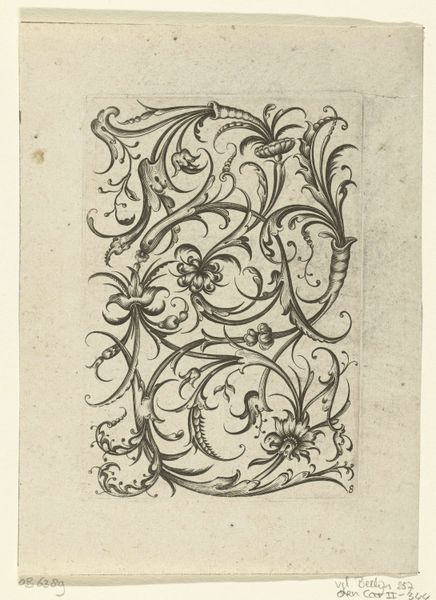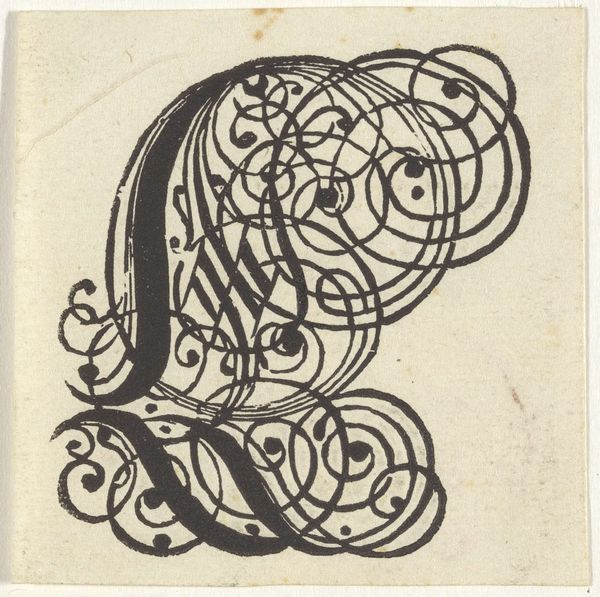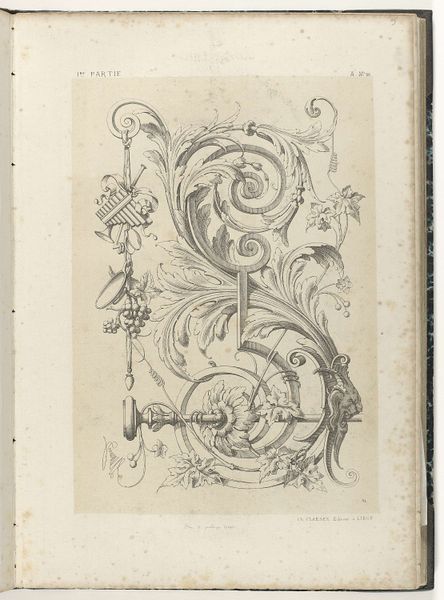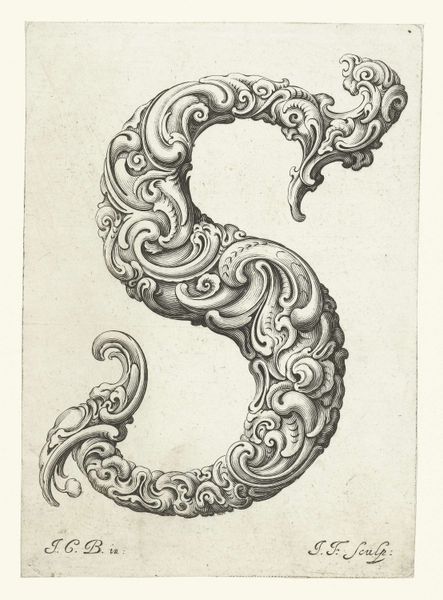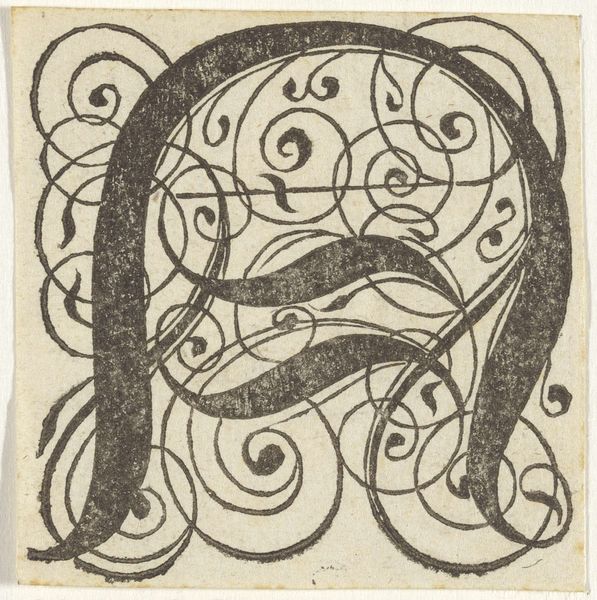
drawing, typography, ink, pen, engraving
#
drawing
#
medieval
#
pen drawing
#
typography
#
ink
#
geometric
#
line
#
pen
#
decorative-art
#
engraving
Dimensions: height 54 mm, width 52 mm
Copyright: Rijks Museum: Open Domain
Editor: We're looking at "Letter T," a 17th-century pen and ink drawing. It's fascinating how a single letter can be so elaborately designed. What stories do you think this kind of decorative initial can tell us? Curator: This "Letter T" offers us a potent intersection of aesthetics and social meaning. Considering the historical context of the 17th century, calligraphy wasn't just about transmitting text. It was a display of power, skill, and cultural identity. Who had access to literacy, to commissioning such art? Who was excluded? Editor: So, it's not just pretty; it reflects social structures. Curator: Precisely! Think about the laborious process involved in creating this level of detail by hand. It speaks to a society where craft was deeply valued, but also one with stark class divisions determining who performed that craft and for whom. What ideologies were being subtly reinforced through this kind of ornate presentation of knowledge? How did access to these skills correlate with gender and race? Editor: I hadn’t considered the power dynamics embedded in something seemingly so simple as a letter. Is there also a religious aspect to this artform? Curator: Absolutely. Calligraphy and illuminated letters flourished, especially in religious texts. This aesthetic served as visual rhetoric, emphasizing the sanctity of the word, reinforcing the Church's authority. But even outside religious texts, that aura of authority likely lingered, influencing how people perceived written information. What we need to ask ourselves is how these displays shaped—and continue to shape—our relationship with information, authorship, and power. Editor: That really changes my perspective on decorative arts. It’s far more than just ornamentation; it's a reflection of the values and hierarchies of its time. Curator: Exactly. And that's why it's so vital to examine these works through a critical lens, considering the social, political, and cultural forces at play.
Comments
No comments
Be the first to comment and join the conversation on the ultimate creative platform.
